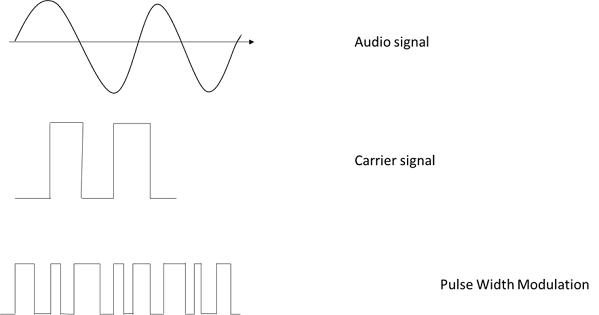Modulation
Introduction -
Hi guys,
Have you heard about modulation, what is mean by modulation, what are different types of modulation? I am sure you have if you are Engineering student. So, in this blog we will discuss basics of modulation.
So, our human voice signal contains the frequency up to 3 kHz and entire audible spectrum is between 20 Hz to 20 kHz. These low frequency signal called Baseband signal.
Baseband signal can not be transmitted over long distance, we need to convert into high frequency signal to transmit over long distance. This high frequency signal is called Carrier signal.
What is Modulation?
Modulation
is a process of converting baseband signal into a signal that varies with one
of its properties like amplitude, frequency, phase.
We obtain
modulated signal by adding carrier signal to baseband signal.
Why we need Modulation?
Reduce the
antenna size –
So, how we
can reduce the size of the antenna, we will understand this point with the help
of some basic calculation. Length is directly proportional to wavelength, below
equation will help you to understand the concept.
Equation –
L α λ
L = λ/4
C = λ x f
(C = speed of light
i.e., 3 x 108 m/s, f = frequency of the transmitted signal, λ =
wavelength of the transmitted signal)
So, if transmitted
signal is of low frequency, then wavelength value will increase, and length is directly proportional to
wavelength so length of antenna will also increase.
Reduce the
interference –
If we
transmit carrier signals without modulation then frequencies will be mixed it
will cause interference, hence, to reduce interference carrier signals are
transmitted with different frequencies.
Allow multiplexing of
the signals –
When we transmit the
signals with frequency modulation technic then multiple signals can be transmitted
at the same time.
Moving next, we will
see different types of modulation.
Types of Modulation –
1. Analog Modulation
2. Digital Modulation
1. Analog Modulation –
If signal in analog or
sine wave form, then we called it as analog modulation.
There are two types of
analog modulation,
i) Continuous
wave Modulation
ii) Pulse
Modulation
Continuous
wave Modulation –
If signal
is in continuous wave form, then we called it Continuous wave Modulation.
Carrier signal
Continuous
wave modulation further divided into three categories,
Amplitude
Modulation (AM) –
The amplitude of the carrier signal changes according to the massage signal or audio signal.
Frequency Modulation (FM) -
The
frequency of the carrier signal changes according to the massage signal or
audio signal.
Phase Modulation (PM) –
The phase
of the carrier signal changes according to the massage signal or audio signal.
If signal
is in pulse form, then we called it Pulse Modulation.
Carrier signal
Pulse
modulation further divided into four categories,
Pulse Amplitude
Modulation (PAM) –
The
amplitude of the carrier signal changes according to the massage signal or
audio signal, width will remain same.
The width
of the carrier signal changes according to the massage signal or audio signal,
amplitude will remain same.
Pulse Position
Modulation (PPM) –
The
position of the modulated pulse changes with respect to carrier signal with the
change in the massage signal, width and amplitude will remain same.
Pulse Code
Modulation (PCM) –
The massage
signal samples and quantized at regular time interval and then with the help of
analog to digital convertor signal is encoded.
2. Digital
Modulation –
If signal is in square
wave form, then we called it as digital modulation.
Digital
Modulation further divided into three types,
Amplitude
Shift Keying (ASK) –
Amplitude of the carrier signal changes according to digital bit stream.
Phase
shift Keying (PSK) –
Phase of
the carrier signal changes according to digital bit stream.
Frequency
Shift Keying (FSK) –
Frequency
of the carrier signal changes according to digital bit stream.
So I have covered the basics of Modulation in this blog, thank you for your time. If any query let me know in comment section.














Comments
Post a Comment